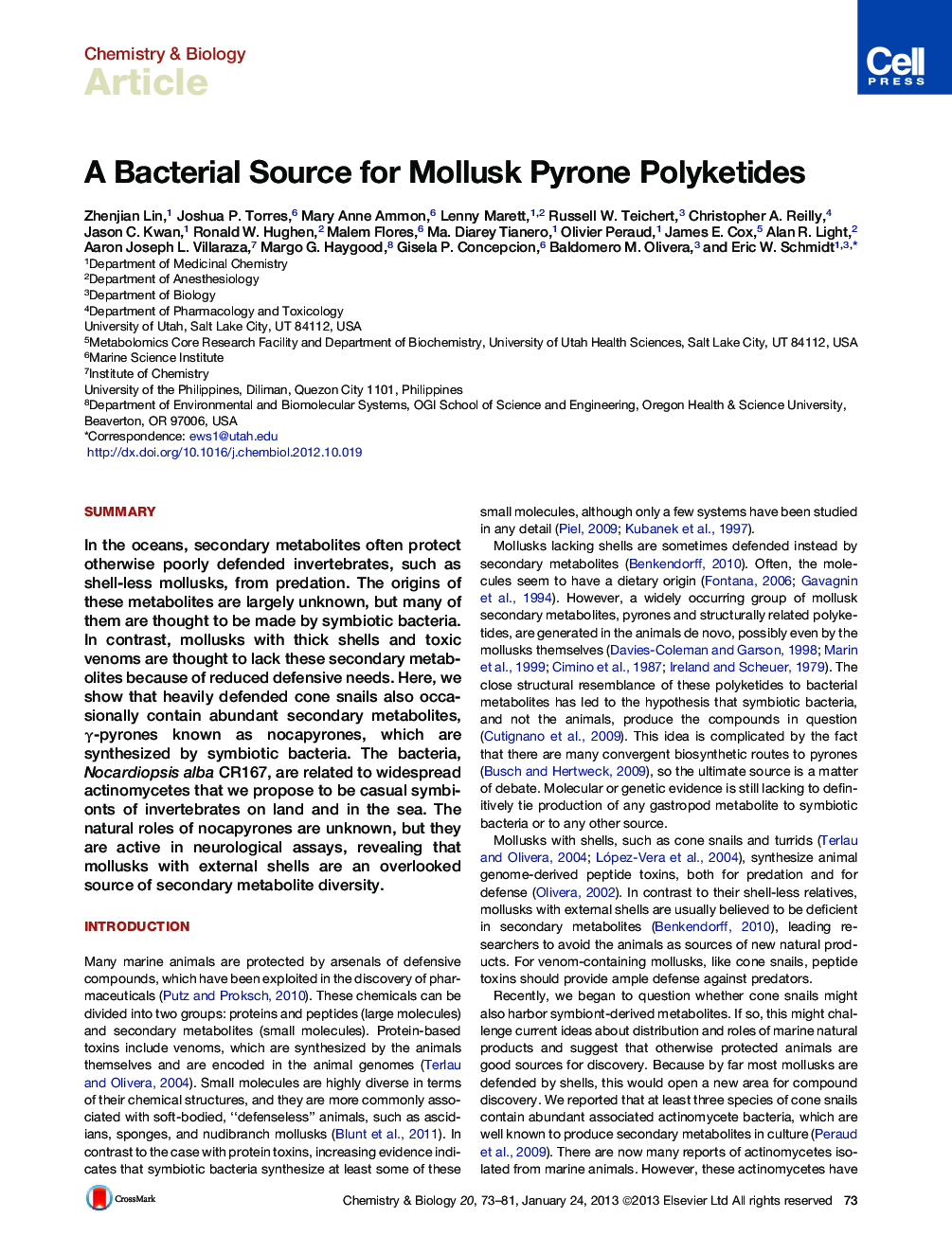| Article ID | Journal | Published Year | Pages | File Type |
|---|---|---|---|---|
| 1391226 | Chemistry & Biology | 2013 | 9 Pages |
SummaryIn the oceans, secondary metabolites often protect otherwise poorly defended invertebrates, such as shell-less mollusks, from predation. The origins of these metabolites are largely unknown, but many of them are thought to be made by symbiotic bacteria. In contrast, mollusks with thick shells and toxic venoms are thought to lack these secondary metabolites because of reduced defensive needs. Here, we show that heavily defended cone snails also occasionally contain abundant secondary metabolites, γ-pyrones known as nocapyrones, which are synthesized by symbiotic bacteria. The bacteria, Nocardiopsis alba CR167, are related to widespread actinomycetes that we propose to be casual symbionts of invertebrates on land and in the sea. The natural roles of nocapyrones are unknown, but they are active in neurological assays, revealing that mollusks with external shells are an overlooked source of secondary metabolite diversity.
Graphical AbstractFigure optionsDownload full-size imageDownload high-quality image (280 K)Download as PowerPoint slideHighlights► Symbiotic bacteria synthesize compounds found in mollusks ► Physically defended mollusks provide a source for bioactive metabolite discovery ► A type of pyrone polyketide pathway described ► Nocardiopsis strains may be widespread, casually associated symbionts of inveterbrates
